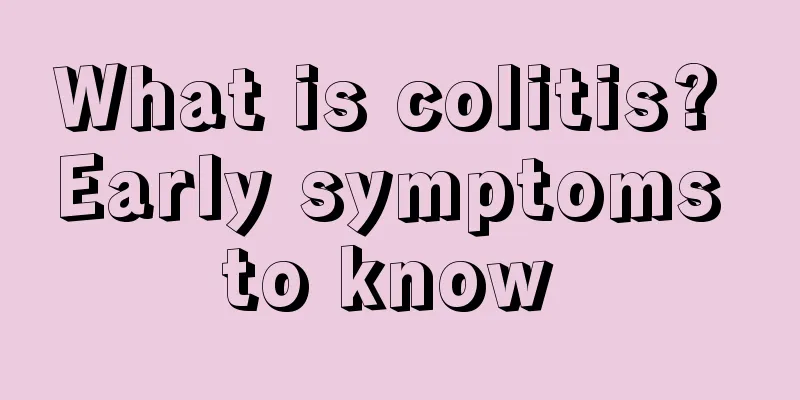What symptoms does inner ear inflammation cause?

|
Otitis interna is an inflammation of the ear, usually caused by bacteria passing through the ear canal. The main symptoms of otitis interna are tinnitus and deafness. It can also easily lead to severe dizziness, nausea and vomiting, and even hearing loss, resulting in unbearable pain in the ear. Depending on the severity of the condition, corresponding treatment can be given, and anti-inflammatory drugs can be taken to relieve the symptoms. Clinical manifestations of otitis interna Symptoms include severe vertigo, frequent vomiting, aggravated by the slightest movement of the head and body, complete hearing loss, and possible deep ear pain. Spontaneous nystagmus initially moves to the affected side, but can move to the healthy side after the labyrinth is destroyed. Vestibular function test: the affected side may have no response to the hot and cold test. Generally, the function can be compensated by the contralateral side after 3 weeks, and the symptoms except deafness gradually disappear. treat Adequate antibiotics should be used to control the infection, and sedatives such as diazepam should be used appropriately. If vomiting is frequent, appropriate infusion can be given. When performing radical mastoidectomy under antibiotic control and clearing the lesion, the fibrous connective tissue in the fistula should not be disturbed to avoid the spread of infection. The fistula opening can be covered with the temporalis fascia. When suppurative labyrinthitis is suspected to have intracranial complications, labyrintheotomy should be performed immediately to facilitate smooth drainage and prevent the infection from spreading into the brain. Etiology, Pathology, and Pathogenesis (a) Localized labyrinthitis, also known as labyrinthine fistula. It is mostly caused by cholesteatoma or chronic osteitis destroying the labyrinthal bone wall, forming a fistula, which connects the middle ear with the labyrinthal endosteum or perilymphatic cavity. Symptoms include paroxysmal vertigo, occasionally accompanied by nausea and vomiting. Vertigo often occurs when the head or body position changes, the tragus is compressed, or when operations are performed inside the ear (such as ear picking, ear washing, etc.). During an attack, the affected labyrinth is in an excited state, and the direction of nystagmus is mostly toward the affected side. There is varying degrees of hearing loss, mostly conductive deafness. If the lesion is located at the promontory, it may be mixed deafness. The fistula test induces vertigo and eye deviation, which is a positive fistula test. If the fistula is blocked by pathological tissue, the result may be negative. Vestibular function is generally normal. (B) Serous labyrinthitis is a diffuse non-suppurative inflammatory disease or inflammatory reaction of the inner ear characterized by serous or serous fibrin exudation. Bacterial toxins or infections of otitis media invade or stimulate the inner ear through labyrinthine fistulas, cochlear windows, vestibular windows or bloodstream pathways, producing diffuse serous inflammation. Symptoms include dizziness, nausea, vomiting, and imbalance. The patient likes to lie on the affected side and leans toward the healthy side when standing up. In the early stage, the nystagmus is directed toward the affected side, while in the late stage, the nystagmus is directed toward the healthy side. The fistula test may be positive. Vestibular function is reduced to varying degrees. There is a significant decrease in hearing, which is sensorineural deafness. If the lesions are cleared and the inflammation is controlled, the symptoms may disappear. (III) Suppurative labyrinthitis: Suppurative bacteria invade the inner ear, causing diffuse suppurative lesions in the labyrinth, which is called suppurative labyrinthitis. In this disease, the inner ear end organs are completely destroyed and their functions are completely lost. It is usually caused by the spread of middle ear infection or the development of serous labyrinthitis. |
<<: What are the hazards of soldering for girls
>>: Is Aosong board environmentally friendly? Is it harmful to the body?
Recommend
Is stage 3 colon cancer serious?
We have all heard of diseases like colon cancer i...
What is Biotin? Biotin
Biotin belongs to the B vitamins, also known as v...
The gold standard for prostate cancer screening
Malignant tumors such as prostate cancer will ser...
How to distinguish good Tremella from bad
Tremella is a food ingredient with relatively hig...
What are the treatments for bronchial asthma? Is bronchial asthma easy to cure?
Bronchial asthma is a common respiratory disease....
What is the best way to remove urine scale?
It is better to remove urine scale by using vineg...
How should lung cancer patients eat? Recommended recipes for lung cancer patients
Lung cancer is a relatively common disease. This ...
Is female bladder cancer hereditary?
Is female bladder cancer hereditary? Many people ...
Nursing principles for kidney cancer
In previous articles, we introduced the symptoms ...
Are stomach cancer, lung cancer and rectal cancer contagious?
Are gastric cancer, lung cancer, and colorectal c...
Can peritoneal and lymph node metastasis after colon cancer surgery be treated?
Generally speaking, if patients have peritoneal a...
Is gallbladder cancer contagious through daily contact?
Cancer is easy to metastasize and spread, so it i...
I get sore on both sides of my lower back when I wake up in the morning
Many friends experience back pain when they wake ...
The number of siblings also affects the risk of brain tumors
In today's world where only children are prev...
Low fever 375
The normal body temperature of a person is genera...









